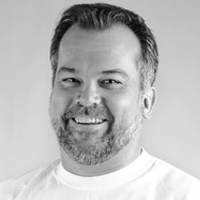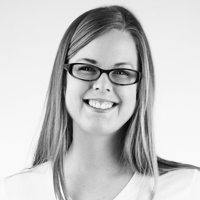Learning Outcomes
After this course, participants will be able to:
- Identify the benefits of the Tempus platform and how the advanced performance can provide significant results for patients who have difficulty hearing in the most challenging listening environments.
- Describe the differences between the two BTE styles in the new Super Power BTE family and identify suitable patient candidacy profiles for each style option.
- Explain how to locate the Patient Insights screens within the Unitron TrueFit version 3.7 programming software.
Introduction
Good afternoon. Thank you for joining me to learn about Max, Unitron's new Super Power product. Included in your handouts today is a copy of the updated ear mold and BTE order form that will include the new Max BTE's. Also included is a copy of the new Max clinical fitting guide with additional details about some of the features and adjustments in the software that we'll talk about today.
I'd like you to take a moment to envision that one patient in your practice with a severe-to-profound hearing loss. This patient is likely a long-time super power user who has the thickest folder in your office. This may be someone that you've been seeing for years. It could be someone that you've seen 25 times this year alone. You care about them. You want the best for them and you want to be able to help them. They want your help. However, when it comes time for getting new hearing aids, it's a struggle for them. They have difficulty with particular situations out in the real world. As such, there are a lot of back and forth visits where you're trying to fine tune, although it's not always clear what it is that you're trying to fine tune to.
Keeping that patient in mind, think about one single word that you would use to describe Super Power fittings. We recently surveyed nearly 300 hearing healthcare professionals and asked them this same question. We compiled their responses into the word cloud in Figure 1. The size of the word in the cloud is reflective of the number of times that the word was used. Two of the most common responses were "challenging" and "frustrating". However, another common word choice was "rewarding", indicating that when we do finally get things right for the person, it can provide them with a rewarding experience.

Figure 1. Word cloud representing hearing care professional opinions on Super Power fittings.
Challenges of Super Power Fittings
There are two big issues that can make Super Power fittings a challenge. First of all, for the average clinician, Super Power fittings are not a big part of their caseload. This shouldn't come as a surprise, as the severe-to-profound category of hearing loss is the smallest segment of the hearing impaired population, representing less than 10% of all individuals with hearing loss. As such, it's not a type of fitting that you're typically doing on a day-to-day basis, where you have a high level of familiarity with the product and the software shortcuts that can make things go more smoothly. The second issue that makes Super Power fittings challenging for clinicians is that the Super Power wearers comprise a very small and specific group, and they are a bit different from the other patients in your practice. In this severe-to-profound category, the rate of hearing instrument adoption is over 70%. Patients with a mild to moderate hearing loss may be on the fence as to whether or not they believe they are having enough trouble to require amplification. With the severe-to-profound group, it's not a discussion of whether or not they're going to try hearing instruments. The challenge is finding the right hearing instrument that's going to meet their unique and personal needs and expectations.
Although Super Power wearers do tend to share one label of "severe-to-profound" hearing loss, it is a diverse group. They all have different needs, preferences, and expectations that have been shaped through their own experiences. You may have older people with severe-to-profound hearing loss who have been wearing amplification since they were young, back when it was still common to have the analog linear super power instruments. Those wearers may have struggled to make the transition from analog to digital technology and perhaps still don't particularly like a lot of the adaptive signal processing that comes with newer technology. In contrast, you may have young adults who have grown up wearing digital hearing aids and are accustomed to all of that technology. The younger wearers have a different set of expectations and experience when it comes to amplification. All of these people come in with different expectations which shape the experience that both of you are going to have in getting them into the right hearing instruments. Based on their past expectations, it might influence what technology level you're going to recommend, or what they think they need. All of these factors may increase the clinician's overall stress level and the amount of time that you end up having to spend fine-tuning your patient's settings to a "just-right" level.
If we look at it from the patient's perspective, it's not necessarily an easy experience for them either. We asked 20 of our field trial participants to choose one word that they would use to describe the experience of getting hearing instruments. Their word cloud looks quite a bit different than the earlier cloud with the clinicians' word choices (Figure 2). Two of the most common patient responses include feeling anxious and excited. They also indicated that they felt confused, eager and that it was a necessity. Clearly, there are a lot of different emotions associated with getting new amplification.
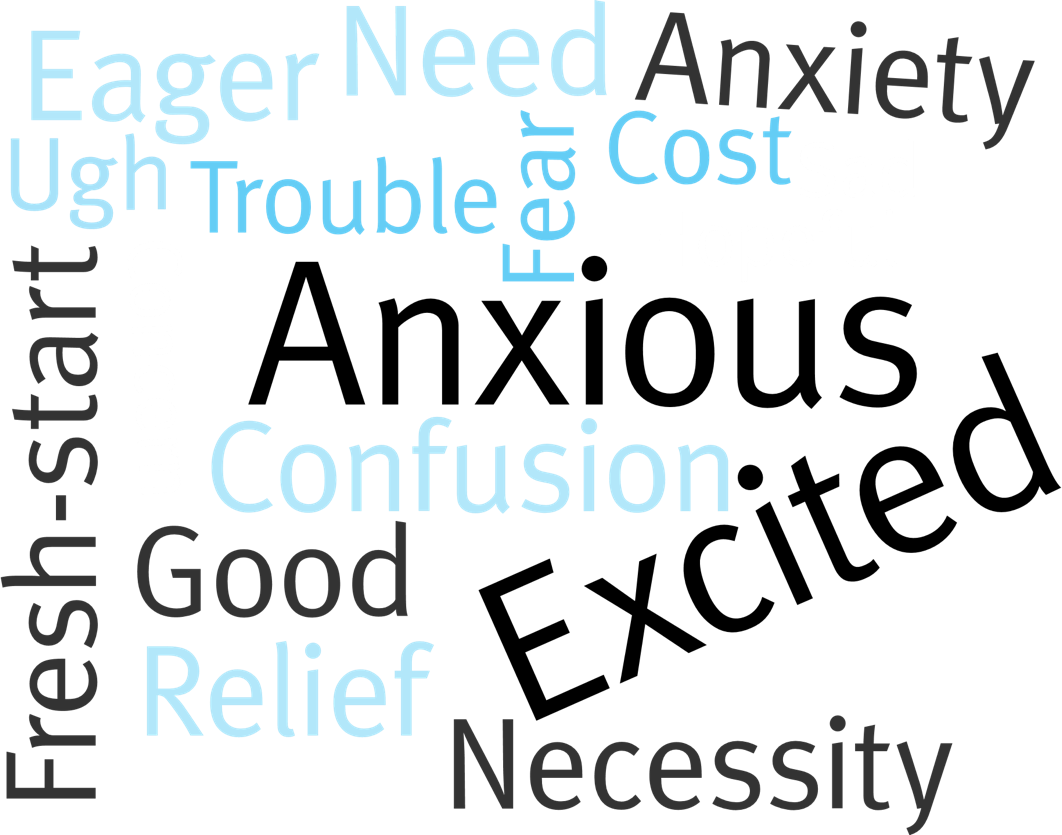
Figure 2. Word cloud representing patient opinions of getting hearing instruments.
Causes of Anxiety with Super Power Fittings
Severe-to-profound hearing loss patients tend to be the most experienced hearing aid wearers. Often they have been wearing hearing instruments for most of their lives. This experience has an impact on not just what they want to hear, but how they want to hear it. In turn, that's going to affect their acceptance of this new technology, which can lead to a lot of fine-tuning, trying to get things right for them. These patients may feel anxious because, based on past experience, it's been a difficult transition. Frequently, they would rather remain with their current technology rather than run the risk of being disappointed. As a result, we see individuals in this category tend to replace their devices less frequently than others. Patients may have a willingness to try new technology, with the hope that it's going to give them an improvement over what they've had in the past. However, mixed with the willingness and hope is the thought at the back of their mind that they are probably going to end up just sticking with their current, familiar hearing technology.
Max: Life Made Easier
Our intention with the new Max product is to take away some of those complications and challenges. With Max, we are able to take the stress out of the process and make the fitting of Super Power instruments easier and more rewarding, allowing a smoother transition for wearers. Max is not just another Super Power hearing aid. Our design team worked through the feature set of the device, along with some of the new tools and the fitting software, to provide a different process for the fitting of Super Power hearing instruments. Max makes life easier for you and your patients in three main areas:
- Easy fittings with Super Power pre-sets
- Easy personalization with FLEX
- Easy convenience with rechargeable technology
Max: Super Power Pre-Sets
Within this severe-to-profound category, wearers have a wide variety of needs and preferences. We have created Super Power pre-sets to improve that first-fit satisfaction and get more positive reactions from the initial fitting. The process of fitting severe-to-profound hearing loss patients with Super Power instruments is a little bit different than the process for fitting typical patients in the clinic. In a recent survey of hearing healthcare professionals, almost 70% agreed that they usually have to make some sort of adjustments and changes to the first fit defaults when they're working with their long-term Super Power patients. Manufacturer's first fits are often designed to provide a comfortable initial sound quality for patients that are new to wearing amplification. If we try to apply that logic for individuals with a severe-to-profound hearing loss, it doesn't necessarily work, resulting in a lot of fine-tuning and tweaking on the part of the clinician.
One of the most common examples of tweaking that clinicians acknowledged was a change of microphone strategy. From the same survey, nearly 40% of clinicians felt that they had to manually switch from directional to omnidirectional microphones for their patients with a severe-to-profound hearing loss. That's a lot of patients for whom the standard first-fits don't accommodate this basic preference of microphone strategy. If you think about some of the other adaptive features (e.g., noise reduction, speech enhancement, and other adaptive elements of the programming), fine-tuning all of those elements during the initial fitting can become laborious and time-intensive. This may be frustrating for the patient when our ultimate goal is to make them happy and willing to try out the devices in the real world.
With Max and the new version of TrueFit (version 3.7), we have created three Super Power pre-sets from which to choose. The intent of each one of these presets is to provide a better first-fit experience for patients by offering a combination of settings which will align more closely with their amplification expectations and past experience. Each one of the three pre-sets represents a different combination of elements, including a processing strategy, the signal processing strength, directionality, and overall gain. The goal of all of these elements combined is to try and correspond to the patient's individual needs and sound listening preferences because no two wearers are alike. Some will enjoy the advantages of an improved signal-to-noise ratio, while others are going to prefer more environmental awareness all the time. We're trying to find a starting point that will pre-configure Max to suit the individual preferences more quickly so that in the initial fitting, you can get by with fewer adjustments.
The three different pre-sets are named Classic, Conventional, and Current. They all represent different amounts of signal processing, based on clinical research and field trial validation.
Classic pre-set. This pre-set is suitable for patients who are used to "the old way" of doing things. These are the folks that typically will prefer minimal digital signal processing (i.e., they don't want as much noise reduction). Quite often, they prefer an omnidirectional microphone strategy rather than directional.
Conventional pre-set. This is the choice for those individuals who do appreciate some digital signal processing and perhaps some directionality, but not at the same strength levels that patients with mild or moderate degrees of hearing loss might prefer. They recognize that there is some benefit but they tend to like things not as aggressive as a patient with a less significant hearing loss.
Current pre-set. This setting employs all of the latest digital signal processing features, including our binaural directional microphone systems. As I said, the goal of this feature is to improve that first fit acceptance for your Super Power users and to reduce the amount of time that you must spend fine tuning to get to that right first fit.
Field Trial Participants
To help illustrate the pre-set options, we will take a look at three of our field trial participants. They all fall into that same category of severe-to-profound hearing loss. All three of them are experienced wearers of Super Power hearing aids, but they each have different preferences for how they wanted their hearing instruments to sound. You can't simply look at a patient's audiogram to know what their preference is going to be. You have to take a step back and look at the whole patient, including their past experience with amplification and how they tend to approach their use of auditory information, in order to determine the optimal starting point for their success.
Jenn. Jenn is a 42-year-old mother of three busy children. Jenn has worn hearing aids for nearly her entire life. She has a demanding job with a lot of face-to-face meetings, video conferences, frequent travel, large events, and conferences. Jenn’s current hearing aids are about six years old and she has been trying to get new ones. She’s tried three or four different hearing aids, but has rejected them all and is anxious that she won’t find something she likes before her current ones stop working. Jenn wants to hear everything, so her new hearing aids must be FM compatible, offer her sound awareness and understanding of speech. Jenn was fit with the classic pre-set. She was thrilled from the very first fit.
Joe. Joe is 61 years old. He got his first hearing aid when he was 14 years old. He started wearing hearing aids on both sides when he was 25. He’s an internet marketing executive and loves all of the technology that he gets to use with his job. However, he doesn’t like talking on the phone. In fact, it’s a point of contention at home that he refuses to answer the phone when it rings. When it comes to getting new hearing aids, Joe loves trying new technology and was skeptical that anything would be better than the five-year-old hearing aids he’s wearing. Joe was fit with the conventional pre-set and described the experience with the new hearing aids as “delightful”. He thought that hearing aids had reached the limit of their capabilities before but were amazed at the improvement he experienced.
Dar'ya. Dar'ya is a 22-year-old university student. She’s been wearing digital hearing aids her whole life. She lives with housemates and struggles to hear them when they aren't right in front of her. She is quite pragmatic when it comes to getting new hearing aids and for her, the most important things are features, price, and aesthetics (size and color). Dar’ya was fit with the current pre-set. She commented on how well the Max hearing aids were able to cut down on the road noise while she was driving.
These evidence-based Super Power pre-sets are integrated seamlessly into the workflow in the TrueFit fitting software. When you detect a pair of Max instruments, the software comes up with a dialog box and prompts you to select which of the three pre-sets you want to choose as the starting point for the fitting. It will use your selection to help get you closer to what should be a match to the user's preferences. Of course, you still have the full flexibility to go in and fine tune each fitting for every patient, so that you can make it a fully personalized fitting. It just gives you an easier way to achieve the best fit faster with less fine-tuning required.
Pre-Set Questionnaire
To support the launch of Max, we've created a clinical fitting guide which includes more details about the Super Power pre-sets. In the guide, you're also going to find a questionnaire that you can use to help guide the pre-set selection process. These questions were created as a simple five-question profile, with the intent of quickly achieving a stronger alignment between the performance of the hearing instruments and the patient's needs and preferences. You might need to set the stage and explain that these hearing instruments have a variety of different features that all can be optimized for them as an individual. Let them know that with the initial fitting, we want to get them as close to what they want to hear right from the beginning. With this fitting software, it doesn't just give us one starting point; it is able to narrow things down to a couple of different options to help save time on the fine-tuning.
The questions are fairly straightforward (Figure 3):

Figure 3. Questions to determine appropriate pre-set.
Based on how they respond to these questions, you can determine the most appropriate pre-set to use as a starting point. If most of the patient's answers are in the left column, that would suggest that the classic pre-fit is probably the best starting point for those individuals. In contrast, if their answers tend to stack in the right column, that might imply that they would be better suited by using the current pre-set. If there a balanced mix of responses falling in both the left and right columns, we would tend to use the conventional pre-set as a starting point.
Max: Personalization with FLEX
The second way in which Max is making Super Power fittings easier is through the easy personalization that we have available with FLEX. If you have been a Unitron customer for any period of time in the last seven years, you've probably heard of FLEX at some point along the way. FLEX gives patients confidence that they're choosing the right level of technology for themselves. It provides a way to create a more personalized experience than what you can get anywhere else. It works well for all patients; however, there are some aspects of the FLEX system that are particularly well-suited for Super Power patients. Max is part of the FLEX ecosystem;a growing network of connected technologies and programs that are all designed to drive a new user experience, not just for the consumers, but also for clinicians. As such, we get to take advantage of all of these other tools and features we have as part of that ecosystem.
At the heart of the FLEX ecosystem is our product portfolio, which now includes Max as part of the product line on the Tempus platform. To this portfolio, we add a suite of FLEX innovations that are all connected to the hearing aid. Innovations such as Log It All and Patient Ratings. Coming soon in the not-too-distant future, we will continue to expand on this ecosystem to include more FLEX innovations that will personalize the hearing healthcare journey for your patients, and improve the experience that you have as the provider.
This whole FLEX ecosystem is born out of Unitron's collective belief that every patient deserves a personalized hearing experience. We don't believe that there should be a one-size-fits-all approach to hearing health care. FLEX makes the experience of getting hearing instruments easier and more personalized for all of your patients. The FLEX solutions do provide some unique opportunities that can address the specific challenges and barriers associated with fitting Super Power instruments for your severe-to-profound patients.
FLEX:TRIAL
Very few clinics carry stock of Super Power instruments to sell. Fortunately, Unitron offers our demo technology, FLEX:TRIAL. If you keep a set of FLEX:TRIAL devices in your office, and you have a patient who is considering purchasing Super Power devices, you can let them take it home and try it out for themselves. In addition, patients who wear Super Power instruments rely heavily on their devices. They can't go without them. If you have a situation where an instrument needs to be sent in for repair or needs to be replaced, FLEX:TRIAL works well as a loaner. You can program the patient's settings into that trial device and they can borrow it while they are awaiting their new or repaired instruments.
Log It All
Many Super Power patients only want basic technology, without all of the "bells and whistles". They may feel that they don't find themselves in demanding listening situations. Market statistics would indicate that patients in this segment are more likely to take home and try out the basic technology. However, as their clinician, you have to wonder if that is the best solution for them. Are you going to be under-serving their needs with lower-end technology? This is where the combination of Log It All with FLEX:TRIAL devices is beneficial. With the Log It All feature, they can go out into their world, and when they come back to your office, you can look at the Log It All data to gather evidence about their listening lifestyle. You can get a much more accurate assessment of their listening needs. In turn, you can use that evidence to help support a more personalized technology level recommendation for them.
Patient Ratings
Super Power patients are challenging to fit because they have been wearing hearing aids for a long time, and they know what they want to hear and exactly how they want to hear it. That can be frustrating for you as the clinician because you can't follow them around at all times in the real world to gain insights into what's working and what isn't. Our Patient Ratings technology makes this whole situation so much easier. Patient Ratings allows patients to use the uControl app on their smartphone to make ratings and share their impressions of the hearing instrument performance in real time. It's almost like you're following them around in their real world, but you're doing it from the comfort of your office. The data that they're collecting through the app on their phone is transmitted through the cloud directly to TrueFit. You can monitor the data to see what's working and what isn't. This will help guide your decisions on what to do the next time they come in for an adjustment.
FLEX:UPGRADE
There is a possibility that the combination of using Patient Ratings or Log It All with FLEX:TRIAL might reveal that you or your patient had perhaps underestimated their listening needs. With the data you collect, you may find out that the patient could be better served with a higher level of technology. FLEX:UPGRADE makes it easy to address this situation in that you can upgrade the patient's technology right in the hearing instruments that they've already purchased. If you have evidence from Log It All or Patient Ratings to suggest that they might benefit from more advanced features, you can simply do a temporary upgrade to the instruments and send them out into the real world to check it out for themselves. If they come back feeling that it made a difference, it's easy enough to make that change permanent. If not, you can simply revert back to their previous settings. FLEX offers clinicians a way to personalize the experience of buying Super Power hearing aids in a way that was not previously possible.
Max: Rechargeable Technology
The third way in which Max makes life easier is through the convenience of rechargeable technology. I'd like to introduce you to the newest member of the rechargeable family: the Max SP R. This device is going to bring the freedom of rechargeable to a whole new category of patients in your clinic. It will be available in early 2019. We have redesigned the battery door of the Max SP, to accommodate the charging contacts for the Max SP R. With the introduction of Max SP R, you now can offer a rechargeable solution for patients with all ranges of hearing loss.
With the introduction of Max SP R, we will have four different options in the rechargeable category (Figure 4). From left to right, we have the Moxi Fit R, the Moxi All R, the Stride M R, and now the Max SP R.
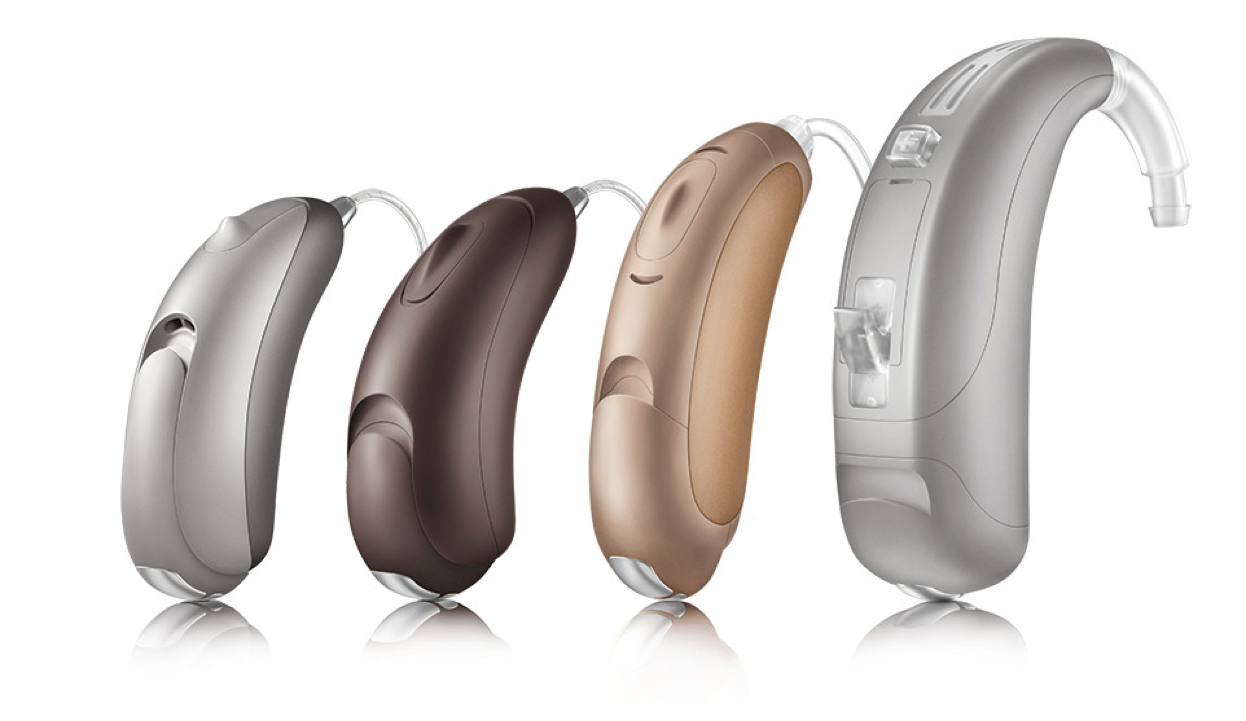
Figure 4. Four rechargeable options.
Max SP R
The Max SP R will have a 137 dB output and 75 dB of gain. It will provide the highest gain and output of any rechargeable hearing instrument on the market. Like our other rechargeable solutions, Max SP R provides the freedom from the hassle of having to change batteries. We know that Super Power patients wear their hearing aids all day. They're dependent on them, so they need them to last. With Max SP R, they can be confident that the battery will last all day on an overnight charge. Recharging is easy: you simply put the hearing aids on the charger, and magnets guide it into place. Green flashing lights will let you know that it's charging. When those lights are solid green and no longer flashing, you can remove them from the charger, put them on, and away you go. Just like the rest of the rechargeable family, Max SP R will also offer the flexibility to use traditional batteries if necessary (e.g., if a patient is traveling, or if there's an unexpected event, such as a power outage). With the introduction of Max SP R, patients will be able to benefit from the added ease and convenience of rechargeability.
Max: Driven by Tempus
We can't overlook the fact that Max is driven by our Tempus platform. Tempus is our high-performance product platform that was introduced last year. It has been receiving great reviews by both patients and hearing healthcare professionals around the world. Our Tempus platform has been optimized specifically for patients with a severe-to-profound hearing loss, putting the focus on understanding speech. This population wants to be able to hear conversation more easily. From a design perspective, we have our automatic program, with four of the seven environments focused on speech in different levels of background noise.
The Tempus platform offers your Super Power patients a significant upgrade in the platform performance alone. Compared to our previous Max product, Max on Tempus is faster, and it's more accurate in identifying and localizing speech. It has a higher input dynamic range. With the Tempus platform, we have a 101-dB input dynamic range on the analog to digital converter. We're able to handle peak inputs up to 119 dB. In addition to the higher input dynamic range, we also have an extended frequency bandwidth with the Tempus platform, relative to the prior generation of Max. All of these things together combine to provide patients with an immediate and noticeable improvement in sound quality and clarity right out of the box, all thanks to the processing capability of a chip.
Sound Conductor SP
We didn't just make Tempus louder. With Max, we continue our long-standing tradition of optimization of Super Power features for those with a severe-to-profound hearing loss. These individuals have unique needs and challenges when it comes to understanding conversation.
The heart of the Tempus platform is SoundCore, a group of four intelligent features that quickly and automatically understand the listening environment and make seamless adjustments, allowing patients to actively participate in conversations wherever they go. One of the components of SoundCore is Sound Conductor. It is this aspect of SoundCore that we have optimized for the Super Power patient, which we now refer to as Sound Conductor SP. We're using less overall noise reduction in order to maintain a stronger awareness of the environment for the patient. The ultimate goal is to provide a more realistic, expected balance of audibility for speech and background noise in the patient's environment.
With Sound Conductor SP, Max is able to provide an additional 5 to 7 dB of increased speech enhancement compared to our other Tempus instruments. The precise amount is dependent on a couple of different things, such as the environment that the patient is in, and the input level of the speech signal. For softer speech, there'll be more speech enhancement applied, because there's a level dependency to it.
Figure 5 shows what the Sound Conductor screen would look like for one of our other Tempus platform products, Moxi All. We can see that in the conversation in a quiet environment, we're using a combination of speech enhancement (2 dB) and noise reduction (4 dB), in conjunction with the spatial awareness microphone strategy.
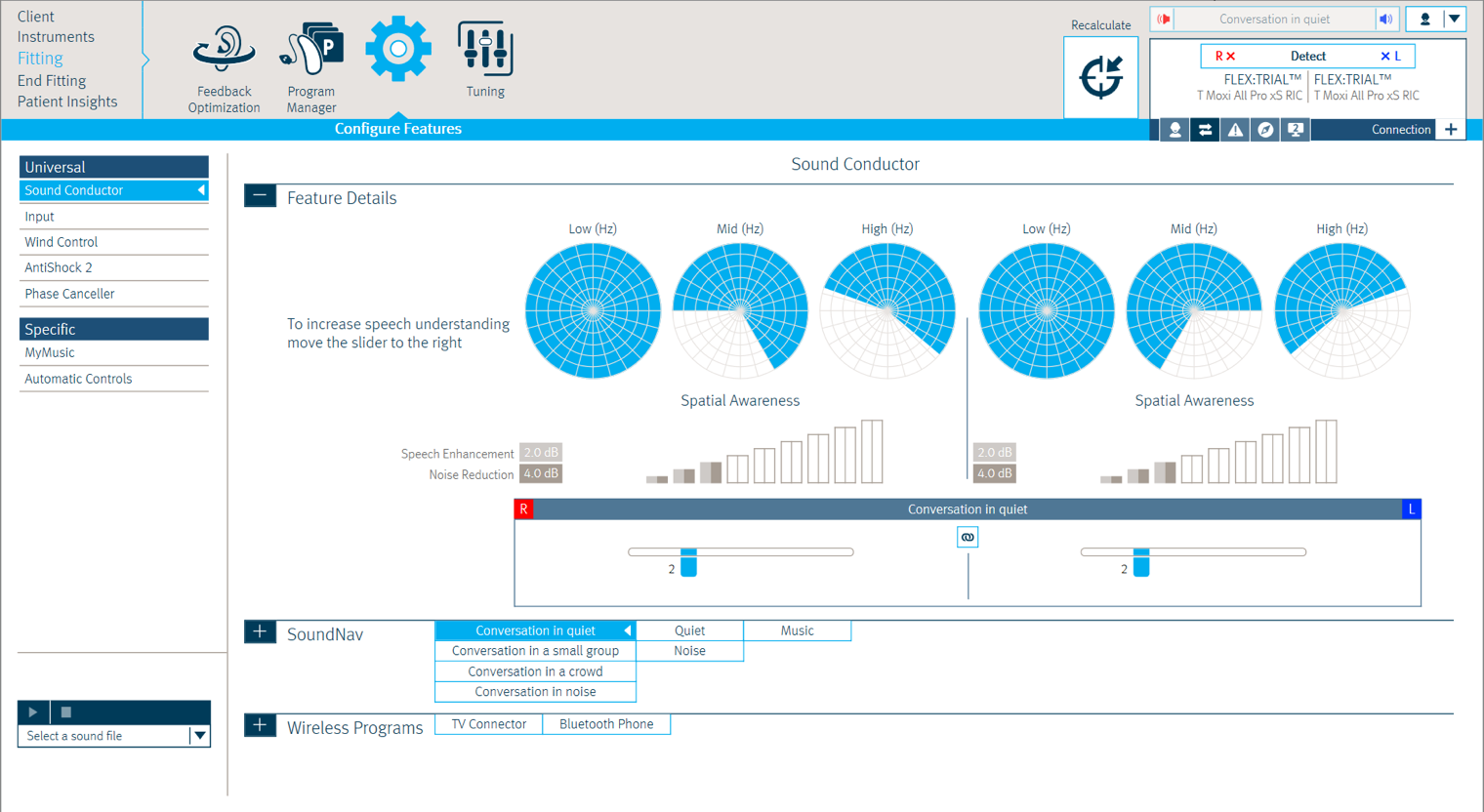
Figure 5. Sound Conductor screen for Moxi All fitting in TrueFit 3.7.
Now, let's look at that same environment (conversation in quiet) with Sound Conductor SP for a Max fitting (Figure 6). We will see different proportions of noise reduction and speech enhancement. In fact, in this particular case, because this fitting was done using the classic pre-set, we'll see that noise reduction is completely disabled. We use speech enhancement, but it's a different amount of speech enhancement. Also, instead of the spatial awareness microphone strategy, we use an omnidirectional strategy, so the patient gets that awareness they prefer. Again, those particular settings are based on the fact that we used the classic pre-set for this particular fitting.
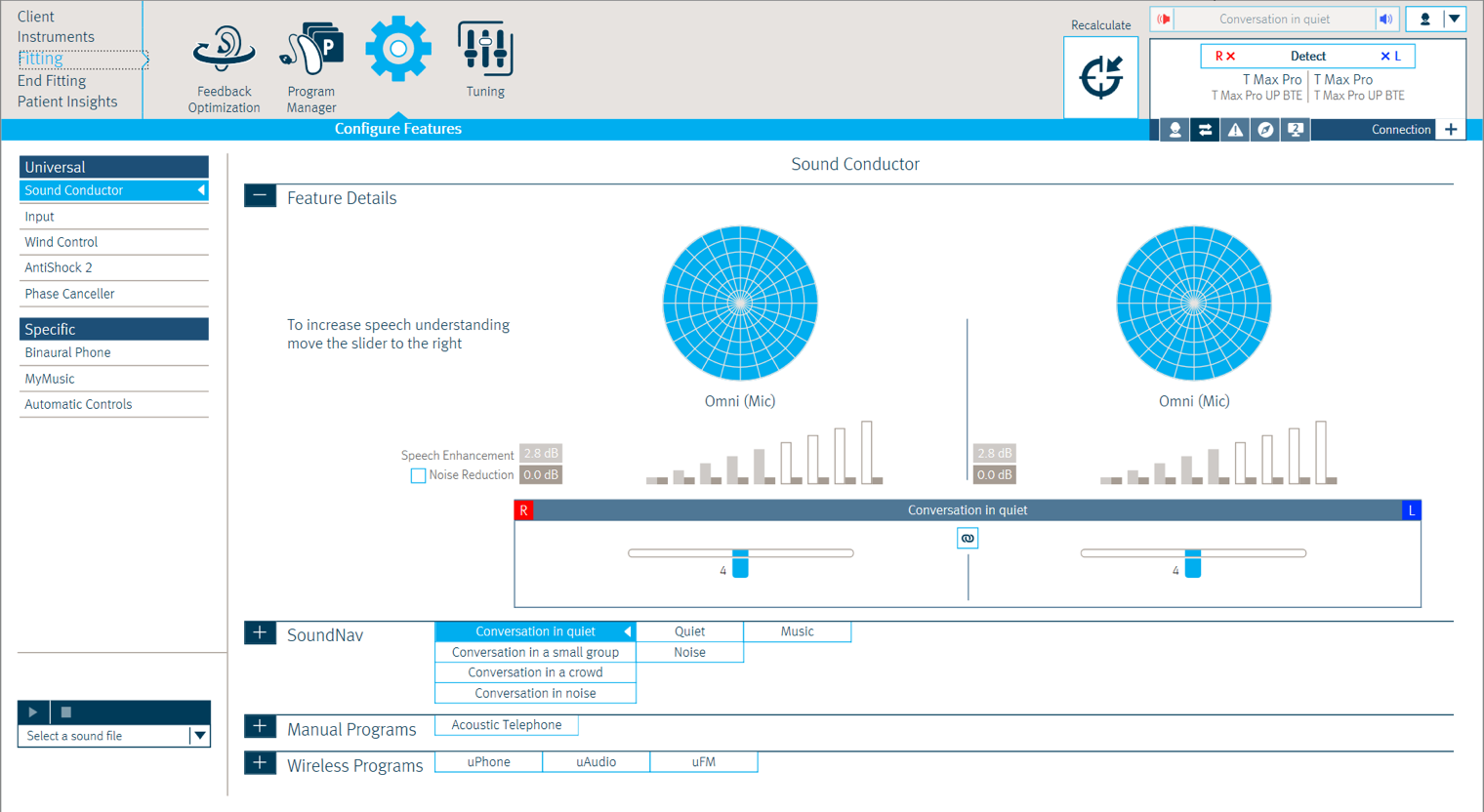
Figure 6. Sound Conductor SP screen for Max fitting in TrueFit 3.7.
With Sound Conductor SP, we now have the ability to decouple and disable noise reduction separately from speech enhancement. For those patients with a strong preference for not liking noise reduction, who prefer the awareness of the environmental sounds and what's going on around them, you can remove the noise reduction and just use the speech enhancement for added speech intelligibility.
The strength of these settings is going to vary, depending on which of the three Super Power pre-sets you've chosen (Figure 7). In general, the Classic pre-set is going to use the strongest degree of speech enhancement and it's going to turn off the noise reduction. The Current pre-set will use the greatest amount of noise reduction because it's going to put more of an emphasis on listening comfort, and a moderate amount of speech enhancement. The Conventional pre-set is somewhere in between Classic and Current, using a lesser amount of speech enhancement, but a greater amount of noise reduction relative to the classic profile.

Figure 7. Sound Conductor SP settings based on pre-set.
Frequency Compression 2
Also with our new Max product on the Tempus platform, we're introducing the use of frequency compression 2 to optimize fittings. Frequency compression 2 is an updated adaptive version of frequency compression, designed to deliver optimal sound quality and audibility, regardless of the type of input signal. It's going to provide patients with improved awareness and speech intelligibility by compressing high-frequency sounds that would otherwise be inaudible into lower, more audible ranges.
Figure 8 is a screenshot of the original frequency compression that is in the rest of our Tempus platform products. With this original frequency compression, we had one fixed cutoff frequency and one compression ratio. This meant there was a limit to how much frequency compression you could apply to restore audibility before the impact on overall sound quality became too great. This was particularly significant for patients with profound hearing loss and left-corner audiograms. They could not receive the benefit of a frequency lowering technology because the cutoff frequency couldn't be set low enough without impacting the sound quality of low and mid frequency vowels and vowel formants. It would tend to result in this perception of speech sounding slushy. Because it was compressing the formants of the vowels too close together, they were no longer distinguishable.

Figure 8. Original frequency compression.
In contrast, Figure 9 is a screenshot of Frequency Compression 2. We have introduced a second, lower cutoff frequency that can provide profoundly hearing impaired patients with access to high-frequency sounds. This new cutoff frequency is adaptive and is fast enough to react to individual speech sounds. The lower cutoff frequency is only used when the speech sounds contain primarily high-frequency energy. If the incoming speech sounds contain more low- to mid-frequency energy, then we adaptively use the higher cutoff frequency to preserve the integrity of the low and mid frequency signals and to improve the overall sound quality compared to the original frequency compression.
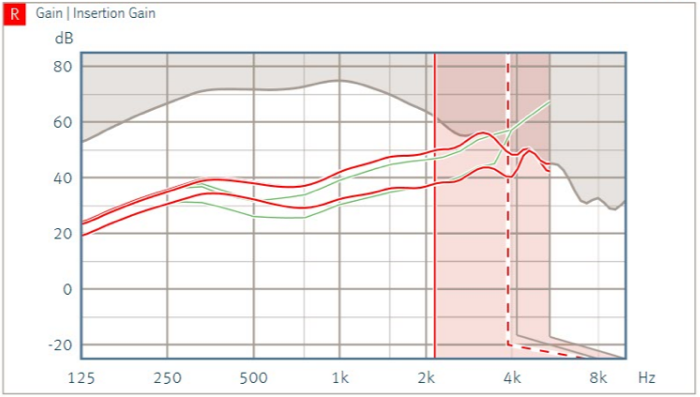
Figure 9. Frequency compression 2.
I'll illustrate in a slightly different way using the familiar sounds audiogram, which is a common counseling tool that shows environmental and speech signals (Figure 10). We will pay particular attention to the Ling-6 speech sounds which span the "speech banana". Speech sounds are not pure tones; they are comprised of different pitches and have more or less spread across different frequencies. It also depends on if the talker is a male or a female, and whether it's an adult or a child. For the purposes of illustration, these sounds are each shown at one particular frequency on this audiogram. The horizontal bar at the bottom of Figure 10 shows the Ling-6 speech sounds spread out across the frequency range of the speech banana. The lighter gray shading across the entire bar represents full audibility for all six sounds for someone with normal hearing. In contrast, the next bar illustrates the consequences of a hearing loss, with no usable hearing above 3000 Hz. The hatched area represents an inaudible area.
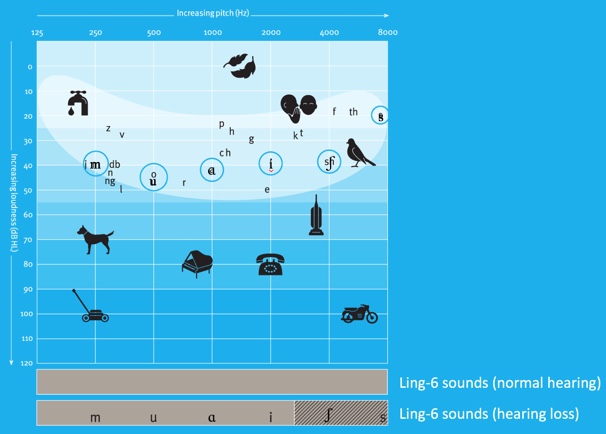
Figure 10. Familiar sounds audiogram with Ling-6 sounds.
The purpose of frequency compression is to restore the audibility of those sounds that would otherwise not be audible for that individual, whether due to severity and configuration of their hearing loss or the limits of hearing aids.
Let's look at a schematic which shows the original frequency compression on and off (Figure 11). There is one fixed frequency region into which sounds are compressed with a corresponding ratio of compression. These settings are determined by TrueFit based on the audiogram and can be adjusted to make it more or less aggressive. When enabled, frequency compression is applied with the same settings, regardless of the input stimuli.
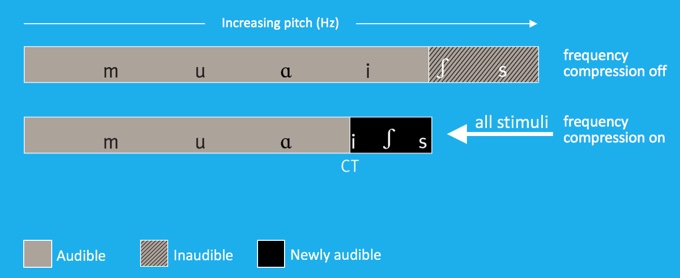
Figure 11. Original frequency compression, on and off.
As shown above, with frequency compression on, /m/, /u/, /a/, and /i/ remain audible, but now /sh/ and /s/ are compressed down to also bring them into the audible range. As a result, patients may hear environmental sounds that they haven’t heard before (e.g., the high-frequency sound of an alarm/detector). Improved audibility like this is great, but if you compare where the /a/ and the /i/ are in the lower rectangle, they are now closer to each other. This illustrates that frequency compression can make vowels less distinct and affect their perceived quality and in turn, overall sound quality.
As shown in Figure 12, without frequency compression 2, on the top row the /sh/ and /s/ sound are inaudible. Enabling frequency compression 2 makes these sounds audible again. When the input signal contains mostly high-frequency energy (e.g., with consonant sounds), the lower cut-off frequency is used in order to optimize audibility and keep the /sh/ and /s/ sounds separate and distinct. When the input signal contains mostly low or mid frequency energy (e.g., with vowel sounds), a higher cutoff frequency is used, so we preserve the integrity of those low and mid-frequency speech sounds and maintain a high level of overall sound quality.

Figure 12. Frequency compression 2, on and off.
Based on the moment-by-moment energy distribution of the incoming signal, the new frequency compression 2 determines which one of the two cut-off frequencies is applied. Frequency compression 2 instantaneously adapts between the individual phonemes of the speech signal.
Power Adaptation Manager
Finally, we are bringing our unique Power Adaptation Manager (PAM) feature onto the Tempus platform. The Power Adaptation Manager is a derivative of our original Automatic Adaptation Manager, which was introduced back in 2011. The Automatic Adaptation Manager was created with the intention of helping patients who were new to wearing amplification to help make that transition from a comfortable, lower level of amplification, to the level of amplification that they should need to maximize their long-term speech intelligibility (over about a six-month period). The Power Adaptation Manager uses that same premise but helps patients that may be used to wearing more amplification than they need and get them down to a level of amplification that is perhaps more appropriate for their degree of hearing loss.
Commonly, clinicians report having long-term Super Power patients who have gotten so used to turning things up that they sometimes prefer higher levels of amplification than necessary. In some cases, they are using amplification levels that could be potentially damaging to their residual hearing. The Power Adaptation Manager is designed to help address that problem. PAM was designed to accommodate the first fitting desires or requirements of Super Power patients by allowing you to start above the 100% target (with counseling on the safety issues of over-amplification). In keeping with patient goals for safer, more appropriate amplification, PAM then gradually and automatically reduces gain and output to a safe level for optimal speech intelligibility. This feature provides the clinician a responsible tool to help address the problems of over-amplification that often exist in Super Power fittings.
Max Product Line Details
I would like to wrap up by providing you with some of the basic details on the Max product line.
Fitting Ranges
As you would expect for Super Power products, the new Max BTEs are powerful, easily accommodating severe-to-profound hearing losses (Figure 13). If you are familiar with the older Max products, we have made a slight change to the form factor indicators. We are now using Max SP to refer to the size 13 battery model and Max UP for the 675 model. This is in response to requests from the market for more consistency with naming in this segment. As stated earlier, the SP model will soon offer a Silver Zinc rechargeable option which can be retrofit. If you have a patient who wants to get new hearing aids today, but they're also interested in rechargeable technology, you can fit them with the Max SP today, and then when the rechargeable technology is introduced, you can retrofit them in your clinic.
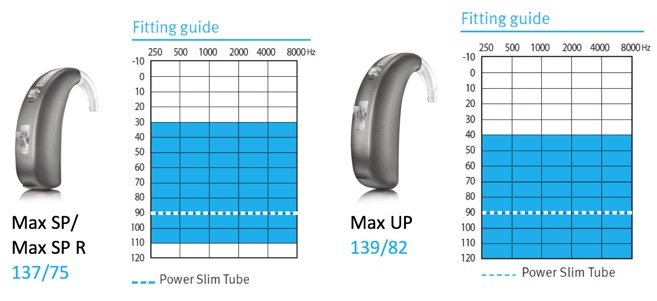
Figure 13. Fitting ranges for Max SP/SP R and Max UP.
Colors
When it comes to colors, both Max SP and UP are available in the color palette that we use for the rest of the Tempus platform (Figure 14). The six most common colors are pewter, platinum, espresso, amber, beige, and charcoal.

Figure 14. Color selection for Max SP and UP.
Accessories and Connectivity
The severe-to-profound market segment is perhaps the most likely to use and appreciate accessories (Figure 15). The new Max product map uses Sonova’s HiBAN wireless technology, not the SWORD wireless chip. The remote control provides convenient control for those with dexterity issues or who just like having an alternative to on-board adjustments. For connectivity with phones and other audio devices, patients can use one of our two streamer options, either uStream or uDirect 3. With these options, they have easy access to all types of media in stereo quality sound. Using the remote control companion microphone, uMic, signal-to-noise ratio in challenging environments and across large distances can be dramatically enhanced. In addition, the uControl App is also something many accessory and smartphone users will appreciate.

Figure 15. Accessories.
All of the accessories are compatible with the rest of the Tempus platform products and also work with Max. For programming Max, you can use the Noahlink or the iCube II. Max will not be able to be programmed with the Noahlink wireless.
FM/Roger Compatibility
Any discussion around Super Power products isn't complete without a quick mention of FM and Roger compatibility. Integrated DAI battery doors are available for both the SP and UP BTE models to provide convenient access for ear level options. The Max UP is also compatible with the AS 10 Roger integrated receiver. The AS 10 Roger can be used with the 675 model of Max. It would be available in a clear color option. Of course, you can also plug in an FM or Roger receiver into the u-Direct 3, to provide access to the many assistive microphone transmitter options that can be beneficial for Super Power patients.
With the move of Max to the Tempus platform, Max is now available in all five of the Tempus platform technology levels, whereas our prior generation of Max was available in three technology levels. The five different levels are Pro, 800, 700, 600, and 500. The key feature sets are consistent with the rest of the products on the Tempus platform.
Summary and Conclusion
In summary, Max is about making life easier by providing easier fittings, easy personalization, and easy convenience. With the Super Power pre-sets, the FLEX ecosystem, and the rechargeable Super Power, Max is changing the way that you think about fitting Super Power hearing instruments, reducing some of the barriers and making it easier to fit your patients.
Citation
Christman, B., Storhaug, J., & Carls, S. (2018). Fall 2018: Super power made super easy. AudiologyOnline, Article 23851. Retrieved from www.audiologyonline.com


